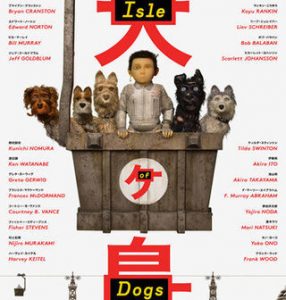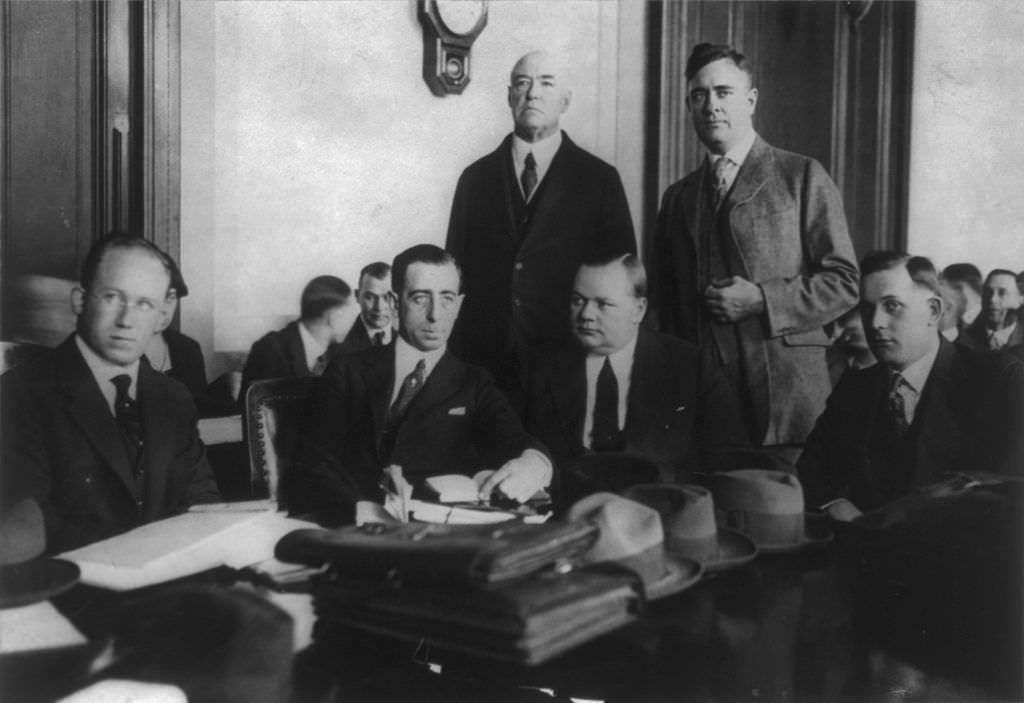“Isle of dogs”: an adult tale in which dogs are more human than humans
 At the box office, Isle of Dogs is the second animated film by Wes Anderson, a self-taught American independent film Director. Known for his individual artistic manner, which is characterized by verified symmetry, “tasty” color palette and constant black humor, Our audience Anderson familiar films “Tenenbaum Family” (2001),” Train to Darjeeling “(2007),” Kingdom of the full moon “(2012) and “hotel” Grand Budapest” (2014).
At the box office, Isle of Dogs is the second animated film by Wes Anderson, a self-taught American independent film Director. Known for his individual artistic manner, which is characterized by verified symmetry, “tasty” color palette and constant black humor, Our audience Anderson familiar films “Tenenbaum Family” (2001),” Train to Darjeeling “(2007),” Kingdom of the full moon “(2012) and “hotel” Grand Budapest” (2014).
We watched the cartoon and try to explain why it is worth watching and you.
So the mayor is a fantastic Japanese city of Nagasaki hate hate dogs accusing our brothers in the spread of a dangerous virus, they send them to the island. Garbage island, where dogs of all stripes, regardless of status and past achievements, are forced to live out their dog age. By the way, “dog” in this case is not a very appropriate definition: one of the distinctive features of Anderson’s animation is the humanization of animals, while people, on the contrary, are too schematic, and a whole army of anti-heroes relies on one positive character. In “the Island” such a positive hero becomes a boy Atari Kobayashi, the adopted son of the evil mayor, who flew to the Island in search of his favorite.
Not unreasonably,” Island “critics compared with Anderson’s first animated work,” the Incomparable Mr. Fox ” (2009). It was funny to remember a cartoon where a Fox and a badger, for example, instead of digging holes and behaving in accordance with the behavior of animals, dressed in business suits, working with documents, discussing real estate issues, and in General behave exactly like people, not the most, however, hopeless. Well, people brandish guns, set traps, drive animals out of their homes — in General, the behavior, in turn, is absolutely typical for a person in the Anderson system of values.
Here is and “Island”, built on contrasts, opposes the world dogs — devoted, forgotten, demoted, but still remembering and team “Aport”, and warmly human touch-brutal, pragmatic world ” senior brother.” However, with obvious similarities at first glance and in General a simple plot, this work is largely more Mature, complex, touching on the eternal issues of personality-the state, the authoritarianism of power, loyalty-betrayal and, of course, love-dog, but at the same time extremely human.
If we talk about the style of the “Island”, then there is a noticeable influence of Japanese cinema and the culture Of the land of the rising sun in General. Anderson himself comments on the choice of location of the film: “We wanted to make a film about abandoned dogs, but we also discussed the possibility of doing something in Japan, about Japan, a film that would reflect our common love for the cinema of this country, especially the work of Akira Kurosawa (“Drunk angel”,”Homeless dog”).
Wes Anderson and his heroes
By the way, from Japanese Directors Anderson mentions not only Kurosawa: “Miyazaki brings details and moments of silence. It shows the nature and tranquility, rhythm, not peculiar to the American animation tradition. It was a source of inspiration for us. Sometimes, working with the composer Alexander Despla on the soundtrack, we came across places where the music had to be sacrificed because the film required silence. It’s all from Miyazaki.”The work is full of Japanese motifs – here you and Kabuki theater, and sumo fights, and the aesthetics of Japanese painting, and Taiko drums. In General, fans of Japanese culture will be satisfied, however, as well as the mass audience, not devoid of a sense of beauty. Because there really is something to see here.
Primitive, sometimes even rough at first glance, the animation, with a minimum of computer processing, is characterized by exceptional detail. Anderson is generally one of those Directors who pay special attention to all these little things that turn the author’s cinema into aesthetic surfing. An attentive spectator, of course, will notice how the hair on the back of the dogs wobbles, as well as ulcers on their skins, worm-infested fragments of food — a disgusting and at the same time surprisingly beautiful sight!
Add to this the trademark symmetry, excellent sense of color, a few theatrical scenes inside the cartoon, as well as as always impeccable music, then break into chapters, sprinkle with satire — and you get a slim, meaningful, philosophical cartoon, designed for a wide audience.
Watch it if possible is in the original: people here speak Japanese, dogs-in English voices B. Cranston, B. Murray, L. Schreiber, E. Norton and D. Goldblum. Also behind the scenes you will hear S. Johansson, T. Swinton and Yoko Ono as an assistant scientist.To sum up, I would like to wish you a pleasant viewing. Eccentric, aesthete and “eternal child” Wes Anderson did not disappoint us once, did not disappoint now. “Dog island” is a wonderful fairy tale for adults, an original visual masterpiece and a moral lesson, a reproach to big politicians and a low bow to small heroes. A fairy tale in which dogs are kinder than people, children are always better than adults, and a happy ending is the only possible outcome. Otherwise, why do we adults love fairy tales so much?




